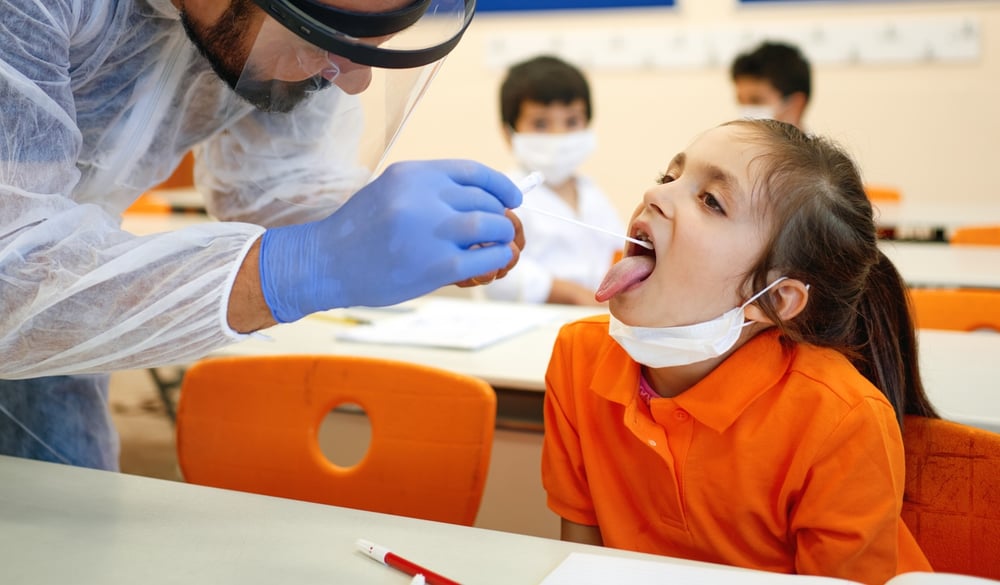
In our Part 1 of this blog series, we discussed the changes we are anticipating in the centralized testing model for COVID-19. There are some changes in store for the COVID-19 diagnostics market driven by the increase in the number of recent authorizations by the US Food and Drug Administration (FDA) for point-of-care (and point of need) testing.
Many diagnostic laboratories are building point-of-need testing programs in anticipation of the re-opening of schools and workplaces. We are anticipating that more schools and workplaces will implement point-of-need testing programs to ensure safety as people return to these environments. These testing programs are important to ensuring student and employee safety and health as we enter the fall and winter months and anticipate more cases of upper respiratory infections (Influenza A/B, COVID-19, etc).
Point-of-Care Testing
The FDA has authorized the use of several point-of-care and at-home use COVID-19 tests that are relatively easy to perform and are considered sufficiently low risk of error (CLIA Waived status). These tests can be performed outside of a centralized laboratory and are exclusive of the CLIA requirements on personnel, proficiency testing, etc. However, performing these tests at the point-of-care or point-of-need require that the testing lab possess a CLIA number, and the labs responsible for performing these tests must follow local, State, and federal public health reporting regulations.
The FDA-authorized tests currently available for point-of-need/point-of-care testing fall into three categories:
- COVID-19 Antigen Tests. This class of test detects the presence of SARS-CoV-2 proteins in an individual’s nasal cavity. Labs that elect to perform antigen-based testing need to be very cautious due to the risk of false positive results, especially when testing large populations of asymptomatic individuals when the COVID-19 infection rates are low. The FDA and CDC recommend reflex testing to molecular assays for positive cases under these conditions.
- COVID-19 Molecular Tests. Molecular tests rely on the use of nucleic acid amplification technologies, such as polymerase chain reaction (PCR) and loop-mediated isothermal amplification (LAMP). Although molecular testing is more expensive and has longer turn-around times even at the point-of-need, these tests provide reliable results, when performed properly.
- COVID-19 Antibody Tests. The antibody tests typically detect the presence of IgG and/or IgM antibodies against SARS-CoV-2 in an individual’s blood. These tests must be used with caution as well due to a risk of false negative results in individuals who are infected with SARS-CoV-2 (and potentially contagious) but have not yet started to produce a detectable level of antibodies against the virus. These tests also carry a risk of false positive results due to cross-reactivity with antibodies against other coronaviruses and/or other causes.
The take-home message for point-of-need testing is the testing laboratory needs to design their testing panel carefully to ensure high-quality testing and clinically meaningful results are produced. Additionally, laboratories planning to support remote point-of-need testing should ask their LIMS provider about solutions to facilitate front-end and back-end testing processes. Here at ApolloLIMS, we have built a portal in collaboration with 86borders to support fast, high-quality point-of-need testing for our laboratory partners.
Given these changes in the COVID-19 pandemic, diagnostic laboratories need to prepare their labs and their testing menus to accommodate this shifting landscape. If your laboratory needs support to build for the future and get ahead of the curve in the shifting landscape of COVID-19 testing, we at ApolloLIMS are here to help you. Contact us.
For more information on other trends in diagnostics for 2021, check out our synopsis.



